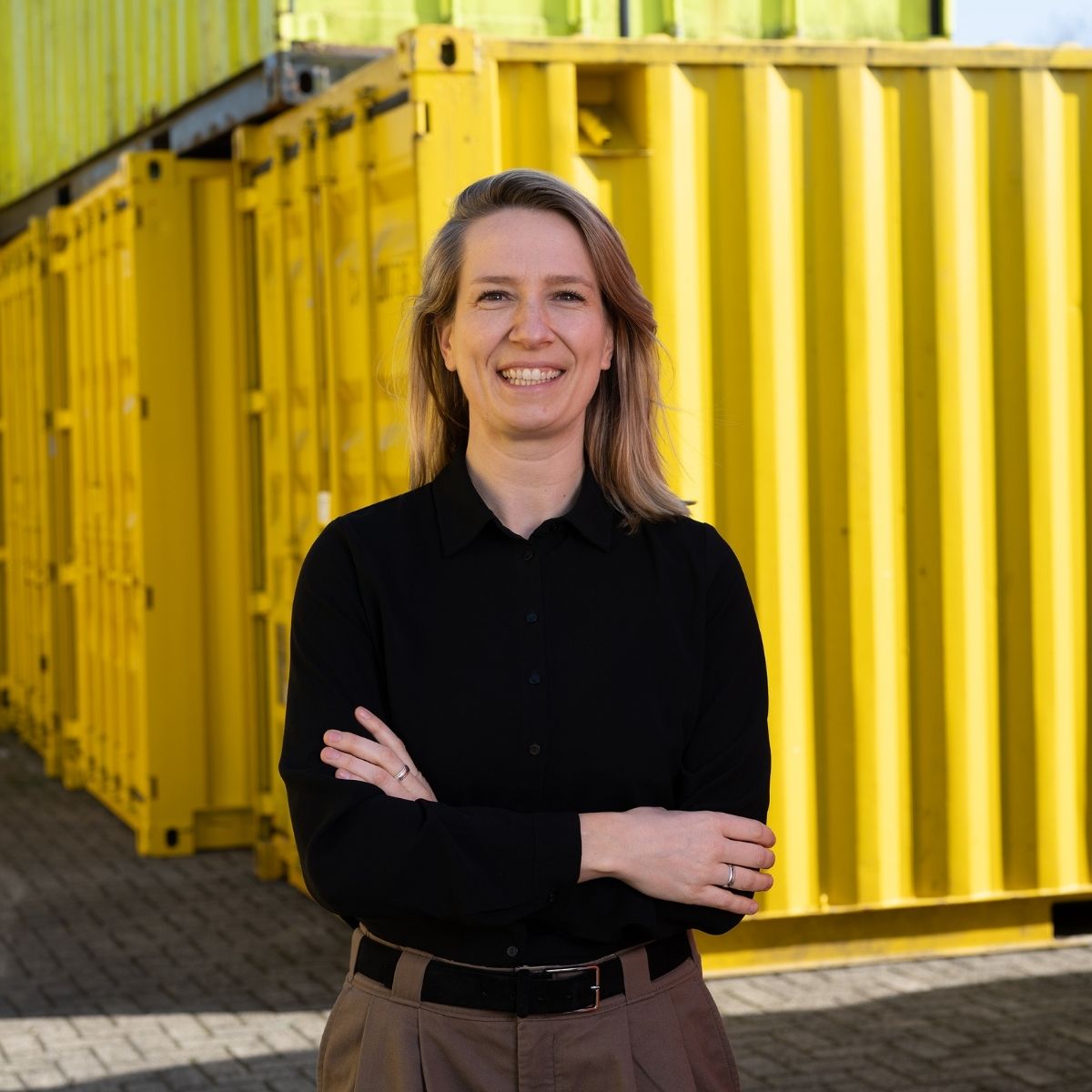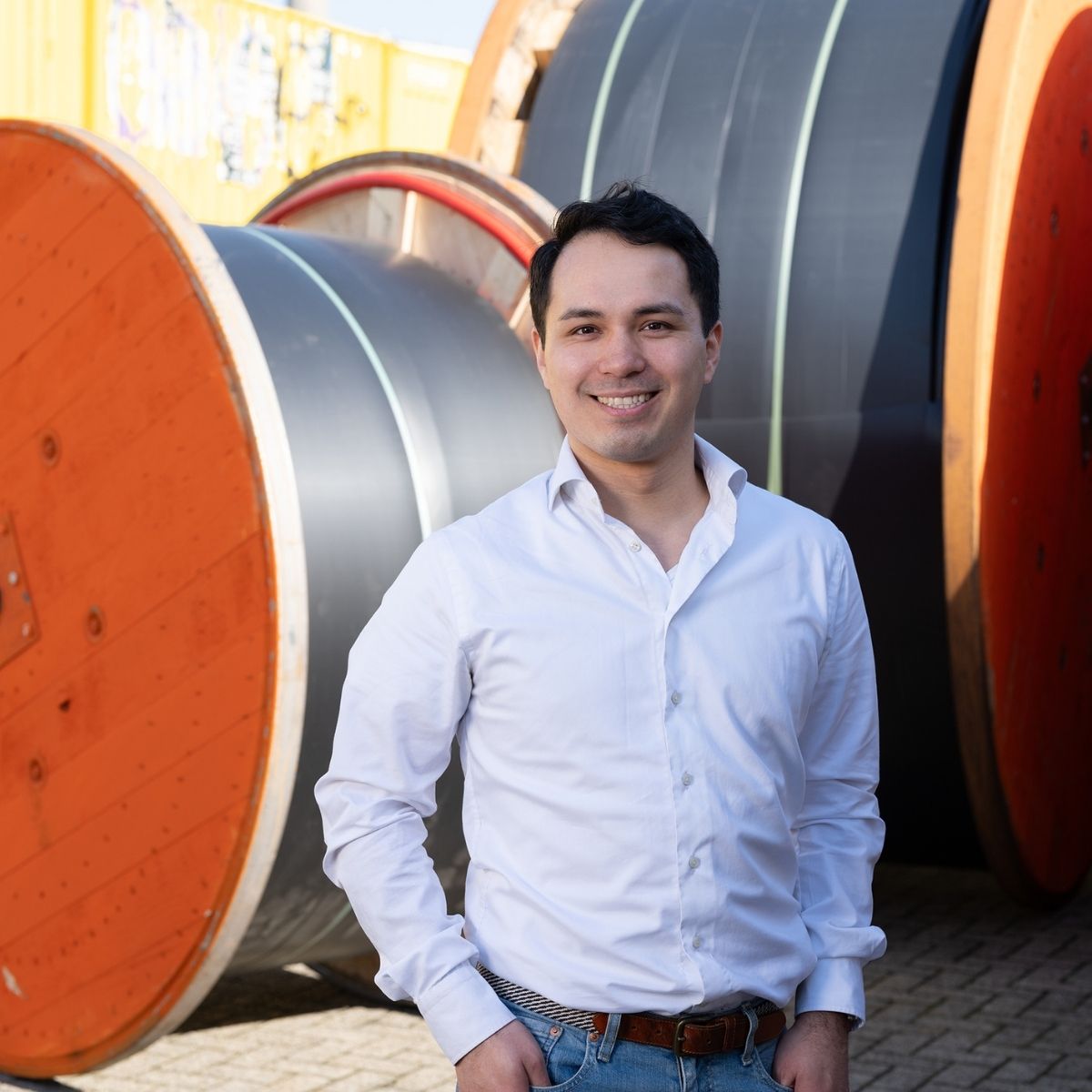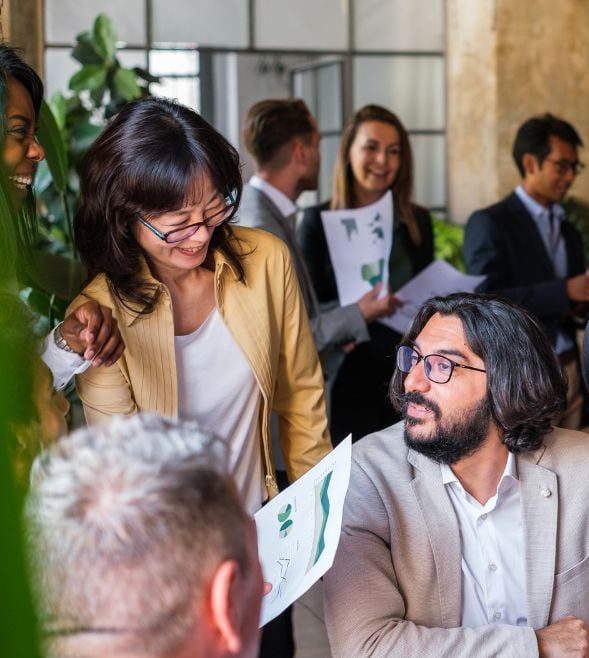Value chain insight essential for grid operator Stedin to accelerate energy transition
Case study
As one of the first organisations in the Netherlands, grid operator Stedin published its annual report in line with the Corporate Sustainability Reporting Directive (CSRD). Grant Thornton supported the grid operator with the implementation of this directive, as well as helping to clarify the value chain for grid cables. ESG-Lead Lance Cosaert of Stedin and Lara Plandsoen of advisory practice Grant Thornton Impact House discuss their collaboration. "Stedin plays a key role in the energy transition.”
Stedin is a regional grid operator responsible for maintaining and building the gas and electricity grids. It does this for 2.4 million customers in Utrecht, Zeeland, and the vast majority of Zuid-Holland. Besides maintenance, Stedin is investing in expanding the electricity grid due to the growing demand for electricity.
By 2024, Stedin had invested more than €1 billion in its networks. With this extensive range of tasks, it is only natural that Stedin feels responsible for the value chain. And it shows that since Lance Cosaert took over as Category Lead ESG at Stedin – barely a year ago – the team has expanded from two to five professionals.
With Impact House by Grant Thornton, his team worked on a value chain study, initially focusing on Stedin's grid cable chain. The research is meant to help understand what that value chain looks like with regard to the environment, as well as social aspects such as human rights and governance. Lance: "The aim is to increase control, reduce business risks and ultimately improve the entire value chain bit by bit".
About the collaboration
Impact House laid the foundation for the value chain study. "That was very pleasant", Lance reflects. "Our collaboration is very positive. Impact House gave us tools to take a structured approach to our value chain study, guiding us from A to Z, with the right frameworks, standards, and how to align with European legislation, the CSRD and the Corporate Sustainability Due Diligence Directive (CSDDD)."
Omnibus, CSRD and CSDDD
The fact that there are plenty of developments from Europe with the Omnibus package to simplify regulations around sustainability and transparency, and postpone them by a few years, does not matter to Stedin. Given its size, Stedin is required to report under the CSRD anyway.
And of the CSDDD, which calls for accountability for what happens in the value chain, Lance believes it is important to start early. "Whether we have to comply in 2027 or 2029, we have the ambition to take steps now. As a semi-public company, we have a social responsibility. That is paramount. Moreover, it helps us stop, mitigate or prevent business risks."

Speaking of risks
Lara explains: "A company like Stedin depends on a rather complex network of parties who all play a role in the composition, delivery and installation of that one cable. As a company, if you don't know where your materials come from, you also don't know where you are at risk, and how to avoid those risks". Lance adds: "When risks take us by surprise, through scarcity or political unrest, for example, we may face higher prices, or worse, no more access to materials. And materials, of course, are crucial to increasing our grid capacity".
Green financing
Lance and Lara also see clear business cases that justify this value chain study. For example, Stedin finances itself largely with green financing instruments. This involves linking Stedin's sustainable activities and/or investments to financing instruments it issues. Thus, Stedin is also tested against the EU Taxonomy framework.
This framework assesses whether activities or investments can be labelled sustainable. If, as a company, you are not compliant with the framework, it affects the extent to which you can issue green financing instruments. Investors are increasingly paying attention to the progress made by companies in this area. Another example in which understanding the value chain also becomes financially interesting.
Lance links this to Stedin's corporate purpose. "That means we can build more, accelerating the transition and connecting more organisations and households to the grid. Because right now, grid congestion is a big problem. We are investing huge amounts of money in the power grid, but there is still a lot to be done."
Scope of the challenge for Stedin
For a good view on what is needed underground, you sometimes have to go up. The conversation between Lara and Lance takes place on the top floor of the headquarters of grid operator Stedin, which offers a fantastic view of Rotterdam and its surroundings.
They overlook the countless windows of high-rise and low-rise buildings, the complex infrastructure spaghetti, streetlights, solar panels, the harbour in the distance, and wind turbines on the horizon. If you take a moment to let all this sink in, you realise how massive the demand and supply of electricity is. And with it, the required capacity of the power grid.
Starting the research
Stedin's value chain study started with determining a suitable product to research. There were several possibilities: the transformer houses, the people deployed, and the equipment used. They chose the cables, an imaginative and essential part of the business. This is how consumers and businesses know Stedin: the big rolls of cables, which are rolled into the ground en masse to make the power grid more robust and ready for the future.
"The Organisation for Economic Cooperation and Development's (OECD) guidelines for corporate social responsibility dictate that you start where you estimate that the ESG risks within your chain are greatest", Lara explains. There is no simple roadmap for that, no algorithm. That assessment is different for every business. "We strategically chose a relatively simple product, in which Stedin invests a lot: the cables."
Lara from Impact House helped Stedin's team run through an initial due diligence cycle. That means gaining insight into the chain, getting in touch with cable suppliers, researching the impact, risks, and opportunities, and then setting up action plans and policies and closely monitoring whether the measures taken are having the desired effects.
Challenging conversations
Lara and Lance found that engaging with suppliers on supply chain responsibility is quite a challenge. "This is because insight into the chain has never been requested before", the Impact House consultant knows. "They don't have much information on things like origin and working conditions either. In addition, chain partners tend to struggle with being fully transparent. They are anxious about what their risks are."
Lara and Lance stress that chain responsibility is, above all, a joint responsibility. Many of Stedin's suppliers are also from the EU and subject to the same legislation, so they must also obtain insight into the chain. Lara: "It is a collaborative process. When we demand transparency, we encourage our suppliers to do the same with their suppliers".
Tip for supplier meetings
After experiencing a series of conversations with Stedin suppliers, Lance has an important tip: do your homework. "Show that you are prepared. By doing so, you ensure that your suppliers start to see that they can also benefit from the chain becoming more transparent. For example, we have a raw materials passport for suppliers: what raw materials does the product consist of, what is the weight, and what percentage is recycled? We help our suppliers with that.
We also scrutinise the due diligence activities that suppliers already carry out and about them. These efforts help create a bond of trust so that we can jointly improve in case of potential abuses; we do not run away from our responsibility."
Through the interviews and databases consulted. Stedin is gaining a sharper picture of the chain regarding the environment, human rights, and biodiversity. In addition, such a value chain study provides starting points to further fine-tune one's own policies. Lance mentions an example: human rights. "The study led us to develop our human rights policy, which we have included in our supplier terms and conditions. This way, we contribute to improving working conditions in our value chain."
Circular options: buying copper with copper
With the increasing understanding of risks and the importance of independence, Stedin is increasingly exploring circular options for its cables. Or, as one of Stedin's directors sums up, how can we buy copper with copper? Stedin is spearheading a consortium with other grid operators to figure out how to turn old cables into new ones.
Surprises?
Were there any surprising insights from the study? Definitely, nods Lance. For example, there are also risks on the downstream side, such as in waste disposal. “In a value chain study, you tend to look back down the chain, to the origins, the mines", Lance explains. "While relatively speaking, many accidents occur in the waste management sector. That is a wake-up call.
With that insight, we can get straight to work." Of course, Lance is by no means implying that Stedin does not need to address any mining abuses. "I always recommend risk-driven operations", Lara states. "So, finding out where the greatest risks are in the value chain and where you have the most leverage to mitigate those risks."

Back to the annual report
From 2023, Impact House will support Stedin in implementing the CSRD. This started with creating a Dual Materiality Analysis (DMA) and a dialogue with stakeholders to determine which themes could be labelled material for the grid operator. That resulted in the value chain study, which is reflected in the recently published annual report in the due diligence section, which Impact House also supported.
All information on how Stedin engages with its stakeholders to make the value chain more sustainable is described as clearly as possible in the annual report. "We are satisfied with the initial result. The due diligence cycle is an ongoing process, and we are obviously already in the process of further developing the value chain research", says ESG-Lead Lance.
Appreciation
The research methodology used has been appreciated and complimented. Lance gave several presentations on the study, including at CSR Netherlands, SER, and RVO. Our external auditor also highlighted our approach as inspiring and best practice. That gives me the confidence that we are on the right track and the energy to continue," Lance says.
The first research cycle was conducted jointly by Impact House and Stedin. Impact House aims to deliberately build up knowledge and experience at Stedin so that Lance's team can take on the follow-up independently. This feels pretty mixed for Lara: "Stedin is an incredibly interesting and impactful player in the energy transition. Supervising a study at this level of complexity, with a team of brilliant people, gives you a lot of energy, so it is a shame to let go".
Do you also want to gain insight into your value chain?
Whitepaper
The European CSDDD introduces new requirements for companies to identify, prevent, and mitigate risks related to human rights and the environment in their value chains.
In this whitepaper, you’ll learn:
- What the CSDDD entails and who it applies to
- How to assess and manage risks in the supply chain
- Practical steps to integrate due diligence into your operations
- What to expect from future enforcement
Thank you for your request!
You’ll receive an email within a few minutes containing the download link to the whitepaper. If you don’t see it in your inbox, please check your spam folder just in case.
Related Insights
View more





